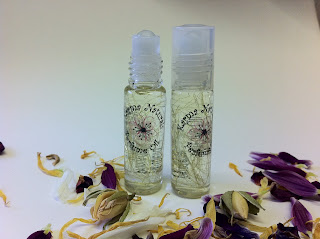It
is no wonder that we blindly carry on covering our bodies in potentially toxic
chemicals when skincare labels and marketing can be so very deceptive. Even
companies that market themselves as natural often include parabens and other
nasties.
So…firstly,
what are the laws regarding labelling?
Simple,
all products must clearly have the ingredients labelled in order of quantity
unless the product is too small to do this!
How many of your make up and
skincare products do not have an ingredient list on?
The
next question is why do these companies break the law in regard to labelling?
We’ll leave you that question to think about!
The
ingredients list must be labelled with the ingredients' INCI names. This is
another reason it is so difficult to understand, as ingredients that are good for
you can sound as confusing as those that aren’t. For example Butyrospermum
parkii is the INCI name for shea butter.
There
is also very limited information available on the potentially harmful or
carcinogenic ingredients found in everyday products
Here are a few nasties to look out
for:
Sodium lauryl sulphate (SLS) – A foaming agent used in most personal
care products, a known skin irritant
Sodium laureth sulphate (SLES) –
Often found in products that are marketed as SLS free, as less of an irritant
than SLS (we still choose not use this in our products)
Mineral oil - Also known as liquidum paraffinum, paraffin oil, petroleum oil,
petroleum jelly or paraffin wax . It is a petroleum byproduct and coats the
skin like plastic. It is difficult to absorb and clogs the pores,
which slows the skin’s ability to eliminate toxins
Propylene glycol - Called a humectant in
cosmetics, it is really "industrial anti-freeze" and the major
ingredient in brake and hydraulic fluid. Tests show it can be a strong skin
irritant.
Parabens (methyl, propyl, butyl, and ethyl) - Used as inhibitors of microbial
growth and to extend shelf life of products. Widely used even though they are
known to be toxic.
To
find out just how nasty these chemicals are google the ingredient MSDS (material
safety data sheet) These can be a heavy read, but are very insightful!
Or there are many independent reports
such as www.health-report.co.uk (Karma Naturals has no
connection with this website)
At the end of the
ingredients list are the potential allergens. These are calculated from the amount
of fragrance or essential oil used. There are 26 potential allergens that need
to be listed of which 16 occur naturally in essential oils. These are Amyl
cinnamal, Amyl cinnamal alcohol, Anisyl alcohol, Benzyl alcohol, Cinnamyl
alcohol, Citral, Limonene, Linalool, Geraniol, Cinnamal, Iso eugenol, Eugenol,
Citronellol, Hydroxycitronellal, Hexyl cinnamal, Benzyl cinnamate, Farnesol,
Methyl heptine carbonate, Alpha methyl ionone, Oak moss extract, Tree moss
extract, Benzyl benzoate, Courmarin, Liliestralis, Lyral, Benzyl Salicylate.
Other labeling
terms can also be misleading
“Hypo-allergenic” - This is a term used by
manufacturers and there is no regulation on its use, all it actually means is
that the manufacturer believes it is less likely to cause allergic reactions
than some other products on the market.
“Fragrance free” –
Some products use fragrance to mask the natural smell and to make it fragrance
free
“Not tested on
animals” - Every synthetic chemical has
been tested on animals! Companies can claim that they do not test on animals as
they have not personally tested their products. This is because someone else
has already tested the individual ingredients for them. You can rest assured
every single synthetic chemical in your non-animal tested products has actually
been tested on animals to determine how toxic the chemicals are for human use.
It is estimated that we absorb up to 70% of what we put on our skin...do you know what is in your skin care products?



















